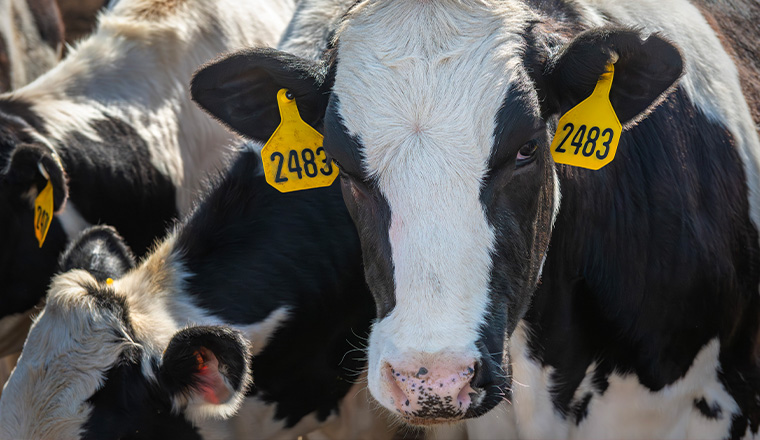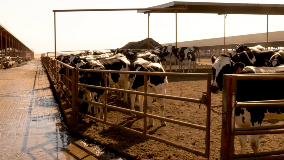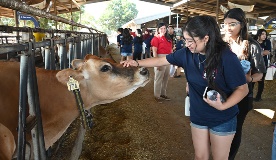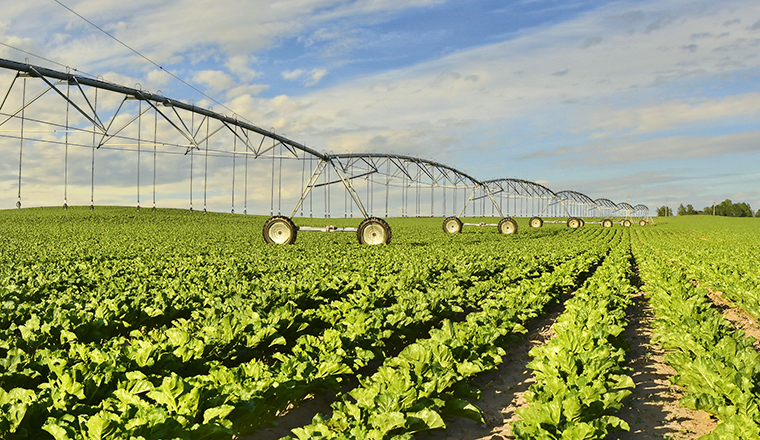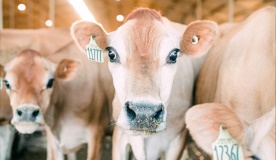- A shrinking national herd and reduced milk production, which could increase milk prices in the latter half of 2024
- Despite decreasing feed costs and anticipated higher milk prices, it is unlikely that dairy farms will reach their breakeven price
- Many dairies may operate at a loss in 2024
Executive summary

Profitability
Dairies are under considerable financial stress. Even with lowering feed costs, profit margins will need time to recover. Nationally, dairy producers have seen milk prices drop by over $2 per cwt in the last year. Northwest states saw even larger reductions in milk prices. In Idaho, the January 2024 average price was $20.20 per cwt, a decrease of $2.30 from the previous year. Similarly, Washington producers faced a $2.50 reduction per cwt in milk prices. Many Washington dairies also have higher milk check retention costs as cooperatives may withhold a portion of their milk check payment to support the cooperative’s goal, such as building new facilities. Although feed costs have decreased by over $4 per cwt over the past year, it's insufficient for producers to reach their breakeven point. Non-feed production expenses have leveled off but remain high. Even with a rise in future prices, it may not be enough to offset production costs in 2024. The milk-to-feed ratio (a measure of how much feed can be purchased with the revenue from one pound of milk, commonly used as a proxy for dairy profitability) paints a bleak picture, signaling that many dairy farms will continue to operate at a loss. Careful management of expenses, capital investments and risk management strategies are crucial.
Industry drivers
Milk prices could get a boost from smaller herd and lower production
A smaller national herd and low milk production are forecasted to boost milk prices in the second half of 2024. Annual milk production declined by 0.4% in 2023, the first annual decrease since 2009. This trend continued in January 2024 as milk production fell 1.1% year over year and February decreased 1.3%. A contributing factor to lower milk production was a smaller national dairy herd, as the U.S. herd declined by 90,000 head. Soaring cull cow prices, due to fewer beef cattle available for slaughter with back-to-back years of liquidation followed by cattle retention, and lower milk profits compelled dairy producers to cull more cows. This included a reduction in dairy replacements, reaching their lowest level since 2004. Futures prices are bullish, with Class III prices in the low- to mid-$18 per cwt range for Q3 2024 and Class IV above $20 per cwt for Q3 2024.
Expanding processing capacity
Dairy processing capacity is undergoing significant expansion across the U.S. This growth contrasts with a declining U.S. milk herd. Milk plant capacity changes include enlargements of existing facilities and new constructions. Processing capacity is expected to expand significantly, with one new processor increasing national cheese production by 1%. However, a smaller herd size may hinder future herd expansion and raise concerns about milk sourcing. The introduction of more processing capacity over the next 18 months could potentially boost milk prices starting in late 2024 if processing facilities struggle to procure milk.
Falling feed costs
Dairy farms are experiencing financial relief from reductions in feed costs. Corn prices have fallen under $5 per bushel, while soybean meal prices have seen a 30% decrease compared to last year. Corn prices could drop below $4.00 per bushel in 2024 due to improved yields and reduced demand from livestock (see the Feed Grains snapshot). Alfalfa prices have declined, reaching their lowest level in over two years. While dairy operations holding feed contracts from 2023 may not have reaped these benefits yet, they will in upcoming negotiations. Feed expenses represent a significant expense for dairies. Any cost alleviation can help mitigate further financial losses.
Bleak financial outlook affects processors and cooperatives
Dairy cooperatives and processors are grappling with profit challenges due to weaker export demand, and fluctuating protein and butterfat prices. To mitigate persistent losses, they have implemented new pricing strategies, affecting producers through reduced premiums or deductions. Consequently, dairy revenue is below market expectations, leading to a significant reduction in the dairy herd and potential sales of herds and facilities. Without improved Class III prices and reduced deductions, further contraction in the industry is likely.
Avian Influenza found in dairies
The emergence of a strain of Highly Pathogenic Avian Influenza (HPAI) affecting dairy cows in the central and southwest plains has the dairy industry on alert. The disease is causing flu-like symptoms and leading to a significant drop in milk production for infected cows. While milk pasteurization effectively eliminates bacteria, ensuring no risk to human health, there is still concern that some countries could impose trade restrictions. Currently, no changes have been made to international dairy trade regulations. Dairy farms are advised to monitor this situation closely and consider adopting enhanced biosecurity measures.
Spokane, WA | April 4, 2024
A complex landscape for Northwest agriculture
posted by AgWest Farm Credit
Spokane, WA | January 24, 2024
Challenging conditions for many ag industries in the Northwest
posted by AgWest Farm Credit
Spokane, WA | October 4, 2023
Outlook mixed for ag industries in the Northwest
posted by AgWest Farm Credit

